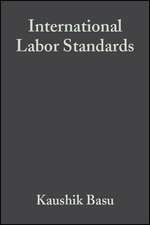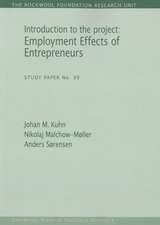Contemporary British Industrial Relations
Autor Sidney Kessler, Fred Baylissen Limba Engleză Paperback – 15 mai 1992
Preț: 422.11 lei
Nou
Puncte Express: 633
Preț estimativ în valută:
80.80€ • 87.79$ • 67.91£
80.80€ • 87.79$ • 67.91£
Carte tipărită la comandă
Livrare economică 21 aprilie-05 mai
Preluare comenzi: 021 569.72.76
Specificații
ISBN-13: 9780333568156
ISBN-10: 033356815X
Pagini: 291
Ilustrații: XVI, 291 p.
Dimensiuni: 155 x 235 x 16 mm
Greutate: 0.44 kg
Ediția:1992
Editura: Palgrave Macmillan UK
Colecția Palgrave Macmillan
Locul publicării:London, United Kingdom
ISBN-10: 033356815X
Pagini: 291
Ilustrații: XVI, 291 p.
Dimensiuni: 155 x 235 x 16 mm
Greutate: 0.44 kg
Ediția:1992
Editura: Palgrave Macmillan UK
Colecția Palgrave Macmillan
Locul publicării:London, United Kingdom
Cuprins
Part 1 The early post-war decades, 1945-70: the Donovan commission; the commission on industrial relations. Part 2 The 1970s: 1970-74 incomes policy - industrial relations and the law; consequences of the 1971 act; 1974-79 - incomes policy - industrial relations and the law; trade unions and employers. Part 3 The economic background: output and productivity; employment and unemployment; inflation; earnings; labour costs per unit; monetary and fiscal policy; distribution of national income; balance of payments. Part 4 Government values and policies: full employment; inflations; public expenditure and the welfare state; de-regulation; the role of the individual; reducing the public sector; the trade unions; the employers. Part 5 The law and industrial relations: 1980 Employment Act; 1982 Employment Act; 1984 Trade Union Act; 1986 Wages Act; 1986 Sex Discrimination Act; 1988 Employment Act; 1989 Employment Act; 1990 Employment Act; the use of law; secondary action; picketing; balloting; other legal matters. Part 6 Employer and management strategies in the private sector: human resource management and management style; attitudes to unions; collective bargaining; involvement, consultation and participation; flexibility; levels and methods of remuneration. Part 7 Government as employer and quasi-employer: the civil service; local government; teachers; the national health service; the nationalized industries; declining industries - coal, railways, steel; expanding industries - electricity, gas, the post office, British Telecom. Part 8 Trade unions: trade union membership; union mergers; trade union finances and organization; trade unions and their members; trade unions and employers; the TUC; the TUC and affiliated unions; the TUC and government; reaction to legislation; unions and the Labour Party; unions and the European community. Part 9 The institutions of industrial relations: employers' associations; collective bargaining - recognition and bargaining agents, bargaining unit level and scope, productivity bargaining; third party intervention; joint consultation. Part 10 Pay and productivity: government objectives and policy; the growth of earnings; distribution of earnings; earnings by occupation; earnings by industry; public sector pay; regional pay; productivity; labour costs per unit of output. (Part contents).














